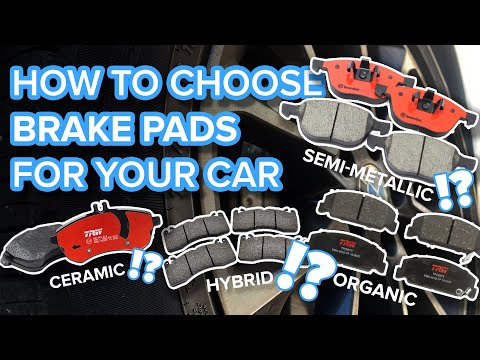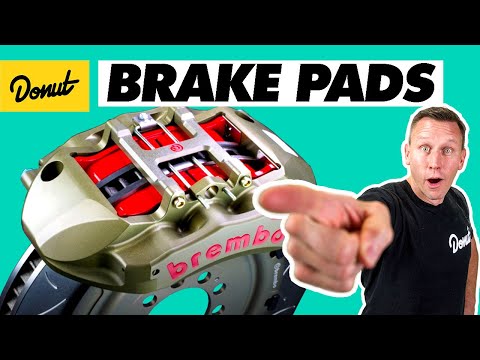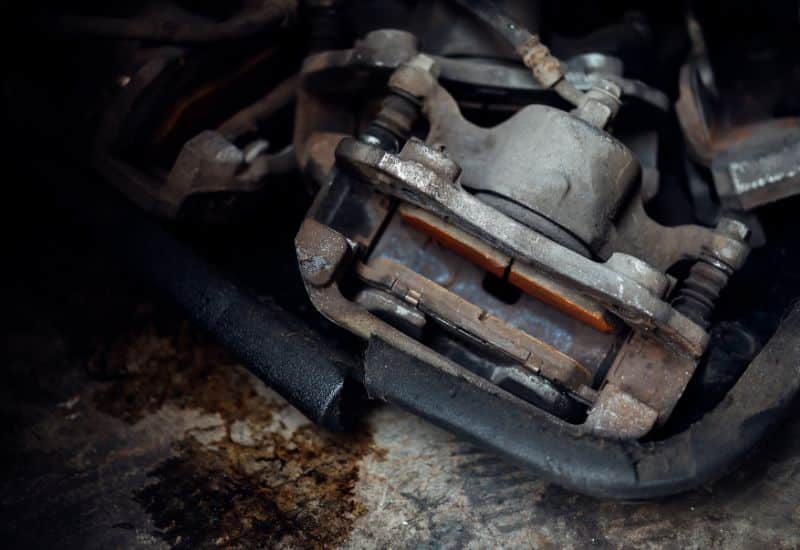
When shopping for brake pads, it’s easy to be overwhelmed by the huge selection of products on offer, and you might be wondering what’s the difference between them. However, while they may all look the same, the composition of brake pads varies immensely, and so does their performance. With effect, brake pad compounds are a sort of “black art,” and most manufacturers are incredibly secretive about their specific formulas.
That said, there is still a lot of information you can find on brake pads to help guide your decision. In this article, we’ll summarize the main differences between the three major groups of brake pad materials, as well as the pros and cons of each one.
What Types of Brake Pads Are There?
Brake pads are made from various compounds with very different recipes but can generally be grouped into three major categories: organic, semi-metallic, and ceramic. A fourth group called low-metallic NAO is sometimes considered and bridges the gap between organic and semi-metallic pads.
1. Non-metallic, Organic, or Non-Asbestos Organic (NAO)
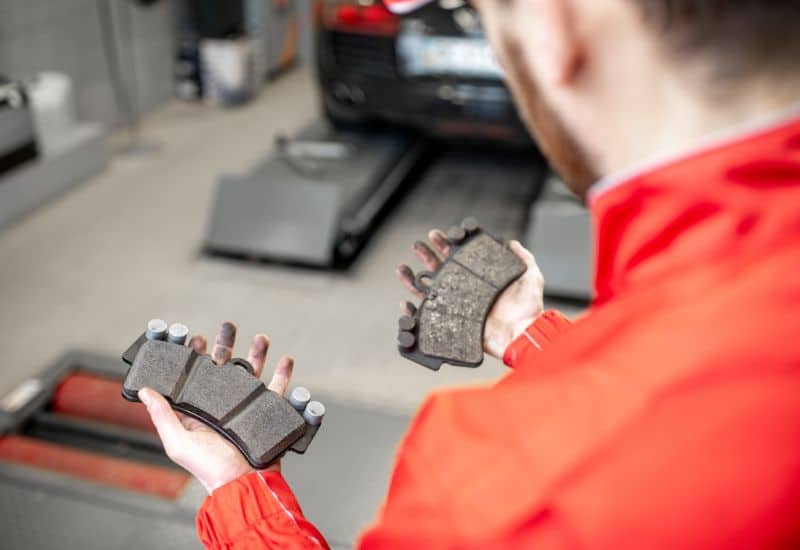
The “original” brake pads were made from asbestos, a material with pretty good properties for many applications. In the case of automotive braking systems, it was great at absorbing heat, making it a prime candidate as a material for brake pads. Unfortunately, as you have probably heard, asbestos was eventually found to be highly carcinogenic, meaning it could cause cancer after prolonged exposure.
This is particularly bad on brake pads since the brakes release airborne dust that the driver and other road users can inhale. This led to them being gradually phased out from use across almost all industries, with the auto industry being no different. So, a quest began to find replacement materials that could mimic asbestos’ properties while not being so harmful to our health.
The solution was the organic brake pad. These are probably the most common type of brake pads used by OEMs today. Made with a mix of organic materials, such as carbon, silica, glass fibers, and rubber, tied together by a resin binding agent, this combination results in the “softest” brake pad. This means they wear out quickly but are less aggressive on the brake rotor. Since the rotor is usually the more expensive component to replace in the braking system, they end up being cheaper to use in the long run. They are also normally the cheapest brake pads you can get, so replacing them won’t hurt your pocket quite as much, even if you have to do it more often.
Organic brake pads are popular with manufacturers straight out of the factory for a few reasons. They are cheap, make little noise, and work well enough for people’s typical usage of their cars. However, they do come with some drawbacks. Their effective temperature range is limited, making them prone to overheating and causing brake fade.
Due to their high-wearing nature, they generate a lot of annoying brake dust, which deposits itself on the wheels and may require you to wash your car more often. Also, because the material in the linings is somewhat compressible and the coefficient of friction is low, you may need to apply more pressure on the brake pedal compared with metallic or ceramic pads.
Low-metallic NAO pads are essentially organic pads with a low amount of metal mixed in the recipe, between 10 and 30 percent. They are a mid-point between full-organic and semi-metallic pads. To create a high-performance variation of the organic brake pad, some manufacturers added aramid, or Kevlar®, to the compound. This strong, synthetic material is very stable at high temperatures and capable of withstanding higher thermal loads without fading. Examples of para-aramid brake pads are EBC Yellowstuff® and StopTech 309 Series®.
2. Semi-metallic or Metallic
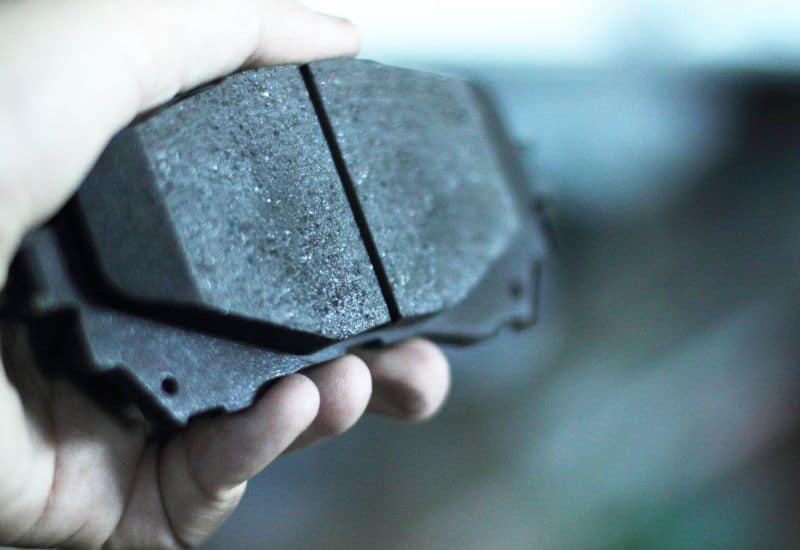
Add about 30 to 60 percent of metal by weight to a brake pad, and they become classed as true semi-metallic pads. Also popular with some OEMs, these are made with a combination of metallic components such as steel, iron, and copper, although the latter is being phased out due to environmental reasons.
Non-metallic materials like graphite are also added to the mix, as well as organic binding agents. The metal content makes them more resistant to high temperatures and, therefore, suitable for more demanding applications than typical organic pads.
They are more expensive, wear slower, and cause more wear and tear on the brake rotors, making them a less comfortable and more expensive option in the long haul. The pedal feel is improved over organic pads, though. The higher the concentration of metallic components, the better the high-temperature performance and the louder and more aggressive the pads. Fully-metallic or sintered brake pads exist but are usually reserved for track-only racing cars.
3. Ceramic
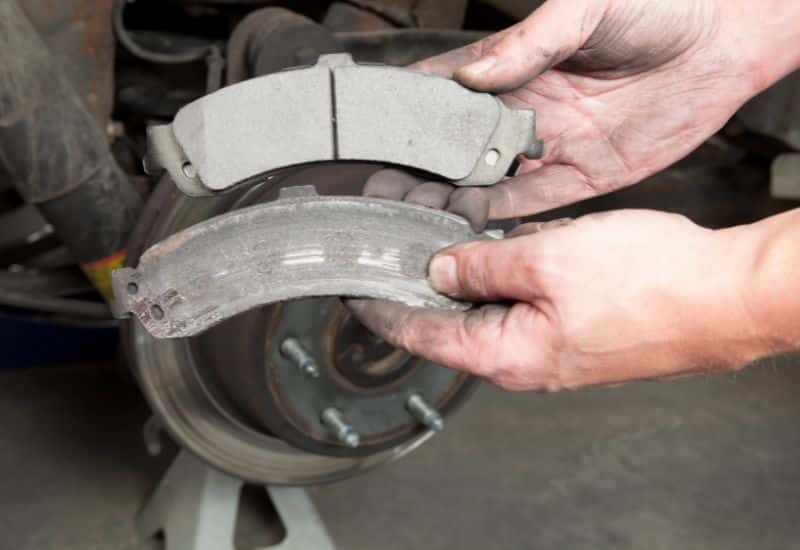
Made mostly of clay, the same material used in pottery, ceramic brake pads have higher fade resistance than organic pads, meaning they can operate at higher temperatures without losing braking performance. The trade-off is they can be a little difficult to bring up to operating temperature, making them less adequate for use when stone cold. They are also normally not the best choice for true racetrack driving, losing out to semi-metallic brake pads in ultimate friction performance and fade resistance.
Ceramic brake pads are very long-wearing while simultaneously being very kind on brake rotors. Because they are so much lighter, the vibration from ceramic pads generates sound in frequencies that are inaudible to the human ear, making them exceptionally quiet. They also generate the lowest dust of all three types, and whatever dust they generate is often lighter in color and much easier to clean than the black, sooty dust left behind by organic pads. For you, this means cleaner, better-looking wheels and fewer visits to the car wash.
These are the newest type of brake pad, coming into the market late in the 20th century. As a result, they are still very expensive to manufacture and purchase. Quality is perhaps more evident here than in other types of brake pads; a low-spec ceramic pad will be dustier and cause a “spongy” feel in the brake pedal when cold, while a high-end product will perform well even for performance-oriented drivers and vehicles. Some common ceramic brake pads are ATE Ceramic®, Akebono EURO®, and TRW Ultra®. EBC Redstuff® blurs the line between organic and ceramic pads, as they are aramid fiber pads reinforced with ceramic particles.
Ceramic vs. Semi Metallic vs. Organic Brake Pads, What’s The Difference?
The following table simplifies and sums everything up nicely.
Organic | Semi-Metallic | Ceramic | |
Cost | Low | Average | High |
Dust | Very High | Average | Very low |
Noise | Low | Very High | Very low |
Pedal feel | Poor | Very good | Good |
Brake pad wear | Very High | Low | Very low |
Brake rotor wear | Low | Very High | Low |
Low-temperature performance | Average | Good | Poor |
High-temperature performance | Poor | Good | Good |
Which one is best for me?
As with most “which one is best” questions, the answer is “It depends.” When it comes to brake pad types, your choice should be based on several parameters, such as:
1. The cheap and comfortable option: Organic

If you only use your car for commuting and drive mostly flat roads, then organic pads are probably your best option. They are cheaper to use in the long run, even if you might need to replace them more frequently than with other pad types. The drawbacks are that you’ll have to live with dirty wheels (or wash them much more often) and may experience some brake fade if you carry large loads or drive on mountain roads.
If you want the benefits of an organic pad but still occasionally do some sporty driving, then you could consider low-metallic or para-aramid organic pads. These are generally more fade-resistant and offer better friction than purely organic pads without generating as much noise or brake rotor wear as semi-metallic pads. They are also not as expensive as ceramic options.
2. The high-quality, expensive option: ceramic
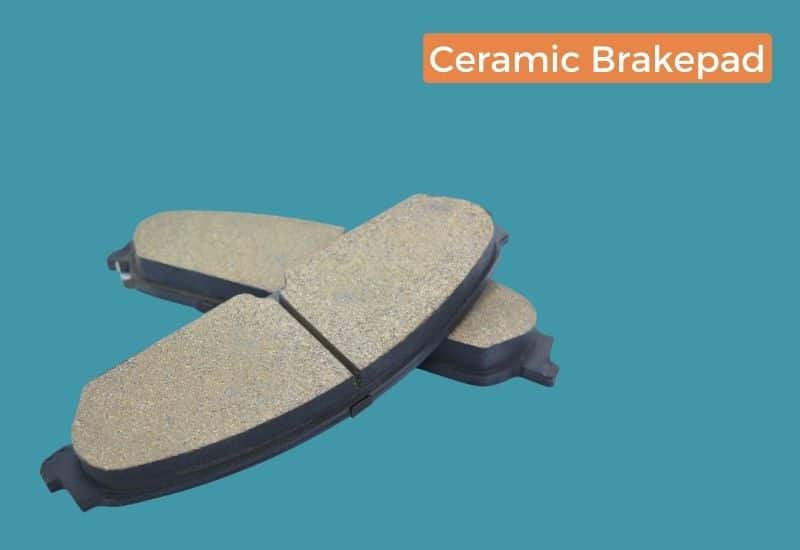
You can see ceramic pads as a more expensive, premium-quality upgrade over organic pads for street use. They are much quieter, produce close to no brake dust, last much longer, provide a more consistent brake pedal feel, provide better braking performance overall, and are usable over a wider range of temperatures when compared to organic brake pads.
On the other hand, they might not be as good from stone-cold conditions, requiring some heat to reach their optimal operating temperature truly. This can make the stopping power feel a bit inadequate when you first press the brake pedal early on a cold morning.
3. The performance option: semi-metallic
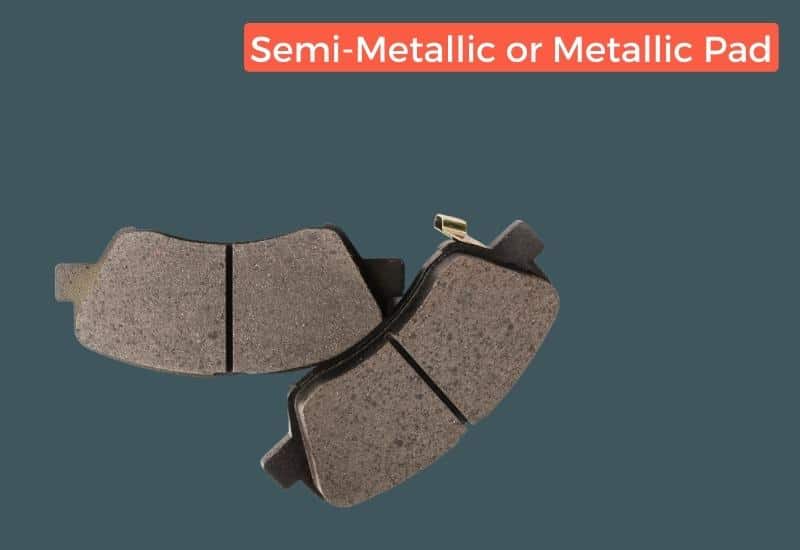
We’ve seen that semi-metallic pads are the best all-arounder if you have a performance car or often go on spirited drives. These pads are effective across a wide temperature range, provide a confidence-inspiring pedal feel on the track, and are resistant to fade.
They might also be your best bet if you routinely tow heavy loads or live near steep, hilly areas, where a stock brake system with organic pads can easily be overloaded. The price to pay for this upgrade is that you’ll have to replace rotors more often and live with the noisier nature of the metallic compounds.
FAQs
What are the types of brake pads?
There are three major groups of brake pad materials: organic (NAO), semi-metallic, and ceramic. Full organic pads generally have below 10 percent metallic materials by weight, while semi-metallics have between 30 and 65 percent. A fourth group, called low-metallic NAO, is often considered; they have between 10 and 30 percent metallic components and sit between organics and semi-metallics on the brake hierarchy.
Which is better metallic or ceramic brake pads?
Ceramic pads do a lot of things well – they produce low noise and dust, last much longer, and are much easier on the brake rotors. On the other hand, semi-metallic brakes are generally cheaper and effective across a much wider range of temperatures. That makes them the number one choice for applications requiring a lot of hard brakings – such as towing or mountain and racetrack driving.
Do brake pad types matter?
Brake pad types definitely matter. While manufacturers are very tight-lipped about the specific construction of their pads, they will all generally fall into one of the three major groups discussed before. Each has its strengths and weaknesses, and choosing the correct pad for your specific application will not only be safer but it will also allow you to enjoy your car more.
Which type of brake pad is best?
That will depend on what kind of driving you do. Organics will do just fine for most drivers looking for the cheapest pad for their commuter vehicle. Those looking for a more premium product can consider ceramic pads, as those are quieter, cleaner, and longer lasting. Drivers of actual performance cars, or those who routinely tow heavy loads or drive on mountain roads, will be better served with semi-metallic pads.
Which brake pads wear faster?
Organic brake pads are the “softest” of the three major types and, therefore, the fastest wearing. For this reason, they also generate a lot of dust.

Written By
Victor Faeda
Victor is a Mechanical Engineer BSc and certified Automotive Mechatronics technician from Portugal. He worked as an intern mechanic for Volvo and has been fixing his own vehicles for over 10 years. Writing and cars are his passion, so now he combines the two by creating content around the automotive industry. He specializes in automotive technology and maintenance.

